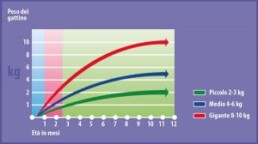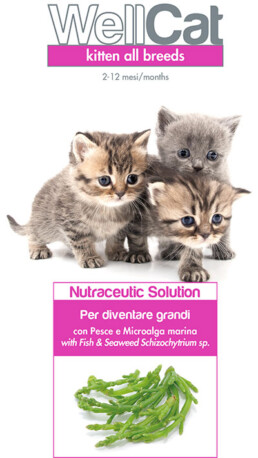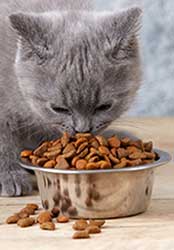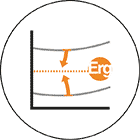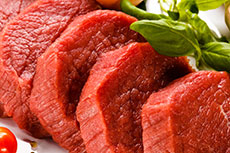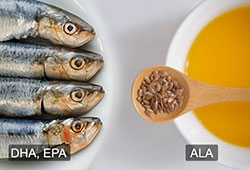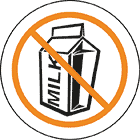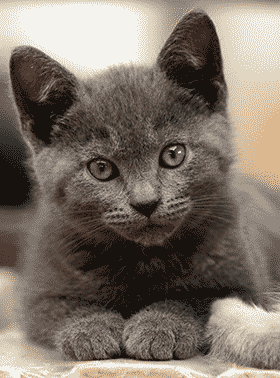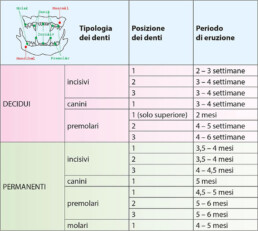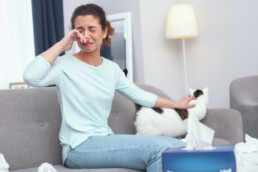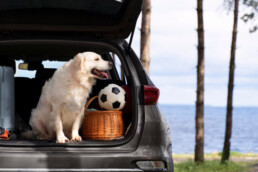Kitten’s guide
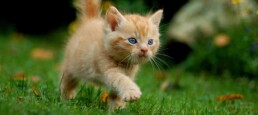
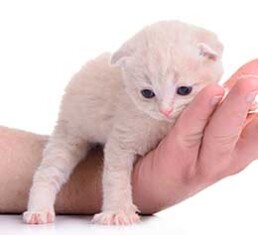
It is important to clean your hands before handling baby kittens. Normally female cats cut the umbilical cord. If this does not occur it must be cut at a distance of 3.5 – 4 cm with sterilized instruments and applying a suitable antiseptical solution.
Kittens get continuously their first systemic immunity in a passive way via the colostrum and local immunity thanks to the ingestion of their mother’s milk. It is important to ensure that baby kittens receive colostrum and milk of their mother within the first 12 hours after birth. This is particularly crucial in kittens fed with milk replacers, being devoid of immune protection.
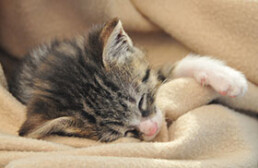
How to house baby kittens
Kittens should be housed in warm places and free of drafts.
Incubators are ideal, especially for newborn kittens, but shoe boxes or cardboard boxes are also fine. The litter should be soft, absorbent and warm. Cloths free from filaments, pile and chips are suitable materials and help to make kittens feel safe as they huddle up inside. Kittens are at high risk of infection, therefore they should not be exposed to bigger animals or combined with other litters. The equipment for feeding and the litter should be kept clean and frequently sanitized.
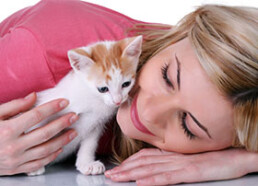
Environmental needs and management recommendations
Newborns are unable to regulate well their body temperature during the first 4 weeks of life. For this reason, kittens are crowded close to their mother, who generates an adequate microclimate in her vicinity, protecting them from changes in ambient temperature and decreasing heat loss. Without their mother, kittens can quickly become hypothermic; condition that can cause circulatory failure and death. An optimal solution is the provision of a source of artificial heat which allows to obtain a heat gradation in the incubator, so that kittens can move freely according to their need to maintain a constant body temperature. Since kittens can quickly become dehydrated as a result of overheating, it is necessary to maintain the humidity close to 50% in order to reduce the loss of water and keep skin and mucous membranes moist. Kittens can express the instinct of suction for not strictly nutritional needs too and for this reason it may happen that they suck other members of the brood. To avoid skin trauma, kittens should be housed individually or separated by dividers. In this case the short but regular manipulation helps provide the social stimulation, that kittens receive from brothers.
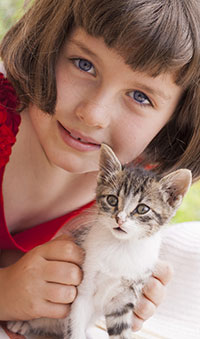
Stimulating evacuation
Kittens are not able to defecate or urinate voluntarily up to 3 weeks of age. Until that time the mother stimulates the urogenital reflex to start evacuation . The people who take care of kittens must therefore ensure to stimulate them properly after they have been fed, gently rubbing the perineal region with a warm moistened cotton ball.
The importance of early and regular contact
It is proven that the stress associated with the handling repeated at regular intervals increases neurological development and improves growth. The lack of stimuli on the contrary leads to develop abnormal behaviors. There will be therefore a reduced exploratory attitude and suspicious and aggressive behaviours which could develop in adult cats. The choice of separating newborns must be therefore carefully weighted, given that kittens must interact among themselves as long as possible up to the weaning phase.
Kitten’s examination
The goal of the examination is to monitor the status of the physical development and health of kittens and to detect anomalies that could affect the proper development and growth. Much importance should be given to the behavior and to other elements such as body weight, temperature and oral cavity.
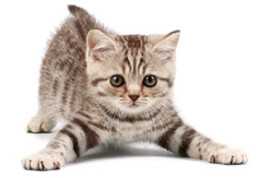
The character of the kittens
Kittens in a normal state of health are vigorous and have a good muscle tone. The instinct of breastfeeding must be manifested immediately after birth and there should be a strong suction reflex. The good feeding state is proven by the abdomen distention and the calm and placid attitude after meals. Indeed, kittens that are in a not comfortable situation (such as hunger, cold, heat) cry all the time and need to be monitored. However, the breastfeeding attitude and milk intake should be carefully checked, since some kittens have round abdomen as a result of aerophagia. Finally, the interaction between mother and kittens is fundamental, since a deficiency can lead to cannibalism or rejection, which would cause the appearance of severe metabolic disorders, infectious diseases in the kitten.
Vital signs
The monitoring of the parameters, indicators of the kitten’s health, is a good way to assess his growth. Birth weight is normally around 85 and 120 g with an average of 100 g.
Kittens weighing less than 75 g are to be considered at high risk and therefore require special care and close monitoring. In these cases, kittens must be weighed every 24-48 hours for the first 3 weeks of life. As a rule, the weekly growth rate for the first 6 months is equal to 100 g; at least during this period, kittens need to increase their weight of 7g per day.
The temperature
Body temperature in kittens is very fluctuating, since the temperature control is ineffective, especially in the first 4 weeks of life. At their birth, the body temperature is 36° C and then rises to 37.5 ° C during the first week of life. Without their mother, kittens can quickly become hypothermic and dehydrated, increasing the risk of circulatory failure. In the surrounding environment is therefore advisable to have the following temperatures: 32-34° C in the first week, 27-29° C in the second week , 24-27° C in the third week, 24°C up to 12th week.
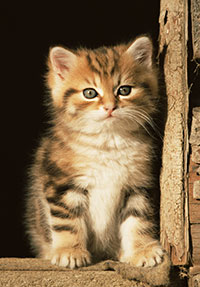
The physical examination
The physical examination includes a careful evaluation of the most frequent alterations and defects found in kittens. The navel should be carefully observed, although it should normally be cut by their mother. It may happen, however, that it is cut excessively short, leaving an opening in the abdomen that could cause the development of umbilical hernia or prolapse. In these cases it is necessary a specific wound management through antibiotic therapy too, to prevent omphalitis and septicemia. On the other hand if the umbilical cord is left too long, this may curl around a paw arresting the circulation to the limb. The general examination should include observation of the oral cavity, paying attention to the mucous membranes and the hard palate. The mucous membranes must be light pink and moist. The permeability of the hard palate is a fairly common defect in kittens, caused by deficiencies of vitamin A and minerals such as copper and zinc during gestation. The persistence of the palate permeability causes difficulties in swallowing milk. Therefore tube feeding is necessary up to surgical correction or spontaneous closure.
Weaning
Weaning is a gradual process that involves the consumption of increasing amounts of solid food by kittens and it begins with the gradual refusal of the mother to breastfeed her kittens. Female cats can indeed reduce their intake of food and consequently their daily production of milk.
The time of weaning
It starts generally at 3-4 weeks of age and ends at 6-9 weeks. At the beginning solid foods are introduced, although 95 % of the energy is still supplied by breast milk. Since the 5th or 6th weeks of age, the proportion of daily calories provided by milk is reduced to 30%. Anyway, a prolonged weaning facilitates the growth and maturation of the immune system of cats, reducing the mortality rate in the period after weaning.
The method of weaning
For the final phase of weaning you can follow
the following sequence of actions.
The first day kittens and the food have to be removed from the lactating cat.
Kittens, however, can have free access to food used for weaning. Kittens at the end of the day are allowed to return to their mother to be breastfed. The next few days kittens should be removed from their mother and have free access to the food.
In these days, however, they should not be brought back to their mother. At the same time the lactating cat should just have a quarter of her food ration, in order to allow the reduction of her milk production. In the following days , the ration will be increased until reaching the amount prior to the beginning of the breeding season. In case the lactating cats are big milk producers, the food restriction should begin a few days before weaning in order to prevent an exaggerated milk accumulation in the mammary glands.
Dietary management
Weaning is a stressful event in the life of the kitten, who is exposed to numerous external aggressions. Proper nutrition and careful management practices can minimize these risks. Food, at least initially, should be wetted with water or milk replacers to form a soft but not liquid mush. From the 6-8 weeks kittens are able to eat solid foods and therefore the mush is no longer necessary. The process of weaning is less severe if kittens are offered the same food before and after the weaning, preventing thus gastrointestinal disorders associated with dietary change. The recommended foods should be characterized by a high digestibility and completeness for growth. Semi-moist foods or foods with strong acidifying properties must be carefully avoided to prevent the occurrence of metabolic acidosis and avoid obstacles to bone mineralization. Similarly it is better to avoid leaving food characterized by high values of moisture at room temperature for long periods, to prevent the organoleptic decay of the product and the unwanted proliferation of many bacterial species.
Proper nutrition after weaning
In the growth period following weaning, kittens have needs, that are strictly dependent on their specific period of life. They need a food that is as complete and balanced as possible, a food respecting fully the minimum nutritional requirements.
Energy needs
The energy requirements are particularly high and are determined by the costs of growth, thermoregulation and maintenance. For these reasons, the energy density of the food should be higher than the food for adult cats. The higher energy concentration of the food reduces the volume of the ingested food to meet the caloric needs of the body, adapting to the small stomach capacity of kittens.
Protein requirements
Protein needs are determined by the requirements of essential amino acids. It is very important to consider therefore sulfur amino acids that are characterized by the presence of sulfur. Kittens indeed, compared to other animal species, need more of these amino acids, which are found mainly in animal tissues and in particular in the meat. This nutritional need reflects the predominantly carnivorous nature of the cat and requires that the main part of the food protein portion is animal-derived.
Lipid needs
Dietary fats play an important role in kittens. First, they are the source of essential fatty acids, such as linoleic acid and arachidonic acid, that the body of the cat cannot produce by itself, but must be ingest through food.
Second, fats supply fat-soluble vitamins, such as vitamin A, vitamin D and vitamin E. Finally fats are a very concentrated energy source, which is: about the double compared to proteins and carbohydrates. As already mentioned, there are essential fatty acids and in addition to those already mentioned the Omega 3 among which the DHA should be highlighted. Several studies indicate that the DHA supplied with the correct nutrition is essential for the normal development of the nervous system, retina and the auditory system. The need for DHA in kittens should be taken more into account than that of dog puppies, since cats have a reduced ability to convert other fatty acids of Omega 3 in DHA. It is therefore essential to ensure that in the food of kittens it is present a fat source that comes from fish or seaweed.
Carbohydrates
Carbohydrates are not needed in the food for kittens as long as it is provided an adequate intake of proteins, which can be used for energy purposes. However, cats can efficiently digest the starch in the grain and use it effectively as an important energy source. Their intake, however, must be calibrated and must not be exaggerated. Therefore, in the ingredient list under “composition”, the first ones that need to be presented in decreasing order are ingredients of animal origin, in order to avoid gastro-intestinal problems. Milk is definitely to be avoided after weaning because it could lead to flatulence and diarrhea. This is due to the fact that large amounts of ingested lactose cannot be effectively digested by the gastro-enteric apparatus of the kitten, that during his growth gradually reduces the production of enzymes for milk digestion.
Stage of growth
During the first week of life the body weight doubles and the reflex that allows the kitten to shiver, which is absent at birth, develops.
At 3 – 4 gdays of age the kitten is able to stand on his own legs and is able to bear for a short time his own body weight.
From the 6th to the 14th day the external ear canal opens, which turns out to be completely open at 17th day.
At 8 days of age the kitten opens his eyes and after 24 hours the pupils are able to respond to light stimuli.
At 10 days of age the kitten learns to stand up and sit down.
At 20 days of age he begins to take his first steps at first uncertain, but then gradually become more and more confident.
During the third week of life the weight triples and the kitten voluntarily controls urination and defecation.
At 21 days of age he sharpens the sense of hearing, which becomes fully functional.
In the immediately following days the kitten learns to climb and becomes more reckless.
Between the 4th and the 16th weeks of age it is the period of socialization of cats, which is very short. Therefore, it is important at this stage to accustom the kitten as soon as possible to the presence of various persons, so that he doesn’t learn to accept just one. A cat that is not exposed in this window of time at the sight, smells and sounds of the external environment may have behavioral problems in the future. It is better to avoid separating the kitten from his mother and the rest of the litter too early: this must occur at least at the age of 6 or 7 weeks.
After the first 2 month the kitten takes on the typical nutrition pattern of an adult cat. Therefore they voluntarily begin to make 12-20 meals a day, evenly distributed between periods of light and darkness. They are also slow to start drinking and to complete the intake of water. This is probably because they have evolved as desert animals. Cats are indeed able to concentrate urine much more than dogs and Man and they can quench their thirst by sea water.
The following months are very important because kittens have experiences that may influence their food preferences later. Exposure to specific food flavorings in the early stages of life indeed increases their choices in later stages. Cats are indeed known to get fixated on a particular flavor if fed only with this for a long time. It is therefore important that various ingredients are in the food, to make the kitten know as many tastes as possible.
At 6 month of age, the kitten reaches 3/4 of his overall development. His appearance is now that of an adult cat, but his behavior is not. His activity level stays therefore still very high, spending much of the day to play. For these reasons it is necessary to continue to feed him with the food specifically formulated for kittens. In this period it must be made the last monthly anti-worm treatment. From now on, indeed, this type of intervention will be quarterly or half-yearly, according to the exposure to risk. This frequency will be maintained for the rest of his life in order to ensure adequate protection against infestation by intestinal parasites.
Between 6 and 10 months of age the kitten reaches his sexual maturity. At this point, after discussing it with your vet, who will illustrate you all aspects precisely, you must decide whether to sterilize him or not.
Teething
The eruption of teeth occurs in a predetermined time for the kitten, although their development may be subject to many variations, and therefore the age may be only approximately determined.
The provisional dental formula of the kitten is composed of 6 deciduous upper incisors and 6 lower, 2 upper and 2 lower deciduous canines, 6 deciduous upper premolars and 4 lower.
The final dental formula of the cat is instead made up of 6 permanent upper incisors and 6 lower, 2 upper and 2 lower permanent canines, 6 permanent upper and 4 lower premolars, 2 upper and 2 lower permanent molars, 2 upper permanent molars and 2 lower.
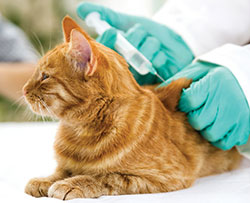
Vaccinations
Vaccines play an important role in the control of infectious diseases and in preventive medicine programs. In light of this, the vaccination program following the right timing and respecting the calls, is essential to protect the health of kittens who will become adults.
“Forget” vaccination against deadly diseases is certainly very risky. Thanks to vaccination were achieved significant results over the years, greatly reducing the incidence of various infectious diseases.
At a European level has been made a list of recommended vaccinations, divided into two categories: recommended (core) and elective (non-core). The classification criterion is based on the effectiveness of the vaccine (protection level) and side effects (level of risk). As for the optional vaccinations, their application is necessary in the case that there is a real risk of exposure to the causative agents related to diseases.
However, it is impossible to suggest a standard vaccination protocol for all cats because the risk of contracting specific infections varies with age and health status of the animal, with the degree of exposure to other cats and with the geographic prevalence of the diseases.
Recommended vaccinations for feline species are to be considered the basic vaccines, which must be administered to all cats.
These are against:
- feline panleukopenia virus (feline parvovirus);
- the virus of infectious rhinotracheitis (feline herpesvirus type 1);
- infection with feline calicivirus;
- Rabies virus, only in areas where the disease is endemic in animal populations.
The criteria that were considered for the inclusion in this list were various. First of all infections whose symptoms are particularly severe were included. Secondly, diseases that can be transmitted to man were included. Subsequently the fact that some diseases have a high potential to spread within the feline population, due to the ease of transmission on a large scale, was taken into account. Finally the selected vaccines are characterized by extreme safety and efficacy.
The optional vaccinations for feline vaccines are not basic and their use is to be assessed as appropriate case by case.
These are against:
- Chlamydiosis (Chlamydia psittaci);
- Leukemia virus (FeLV);
- the feline immunodeficiency virus (FIV);
- Feline Infectious Peritonitis (FIP);
- Bordetella bronchiseptica;
- the Giardiasis;
- The Dermatophytosis.
The vaccination protocol generally foresees the first vaccination on kittens at the age of 8-9 weeks and a booster at 1 month. Later vaccinations should take place annually. Recent data indicate that the duration of protective immunity in cats is more than 1 year in some cases. Consequently boosters against feline panleukopenia, feline viral rhinotracheitis, calicivirus infection and Rabies can be made every 3 years. The flexibility of the frequency should be determined from time to time by the veterinary surgeon, based on the assessment of the risk to which the patients are exposed. High-risk individuals will indeed need to maintain a higher frequency.
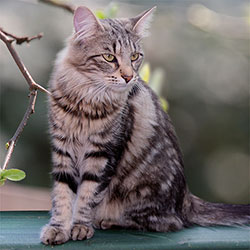
The kitten is now adult
Once the kitten reaches one year of age, he officially becomes an adult cat. Most likely, his character is still lively and cheerful as before, but his nutritional needs have changed. Now that the development is complete adult cat food is needed, which brings the necessary and in the right quantities nutrients, including minerals and vitamins.
First of all adult cats have lower energy requirements, and therefore continuing to use kitten food increases the risk of fattening. It is advisable to implement a gradual transition from one food to another, mixing the one for adult cats with that for kittens in ever increasing proportions for 5-7 days, so that the cat can get used to the new taste and its digestive apparatus can adapt to the new nutrient composition.
Share
Related posts
The ultimate frontier of cat allergy
There are many people who suffer from allergies caused by the…
Holiday with 4-leggend friends
What measures should you take to plan a top holiday with your…
